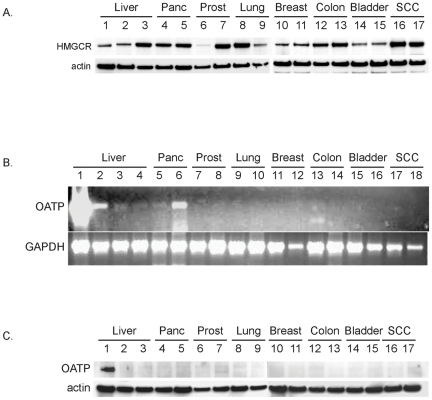Figure 4. 3-hydroxy-3-methylglutaryl coenzyme A reductase (HMGCR) expression varies between cells but the organic anion transporter (OATP) is expressed exclusively in normal liver.
A) HMGCR was examined by Western analysis for its expression as follows: liver (normal hepatocytes, lane 1; HepG2, lane 2; Hep3B, lane 3), pancreas (Capan 1, lane 4; Mia Paca, lane 5), prostate (LnCap, lane 6; PC-3, lane 7), lung (Calu3, lane 8; Calu6, lane 9), breast (MCF-7, lane 10; SkBr3, lane 11), colon (Cacao 2, lane 12; HCT116, lane 13), bladder (U9, lane 14; U14, lane 15), or squamous cell carcinoma (SCCP9, lane 16; SCCM7, lane 17). These data illustrate that HMGCR expression does not correspond to drug response. B) Total RNA isolated from human liver tissue (lane L) or cells and analyzed for expression of a 565 bp amplimers from OATP. The numeric sequence of PCR samples is the same as described for protein in A. GAPDH primers were used on the same series of mRNA samples to determine the quality and loading consistency of PCR products. Only whole liver (L) and hepatocytes (1) expressed multiple OATP amplimers by PCR. Note: PCR amplimers observed in pancreatic samples (lane 6) were not present when other HMGCR primer sets were used. C) Western analysis revealed OATP protein only in the human liver hepatocytes in lane 1. Tumor cell total protein was examined in the same sequence as in A and did not reveal any OATP protein.

